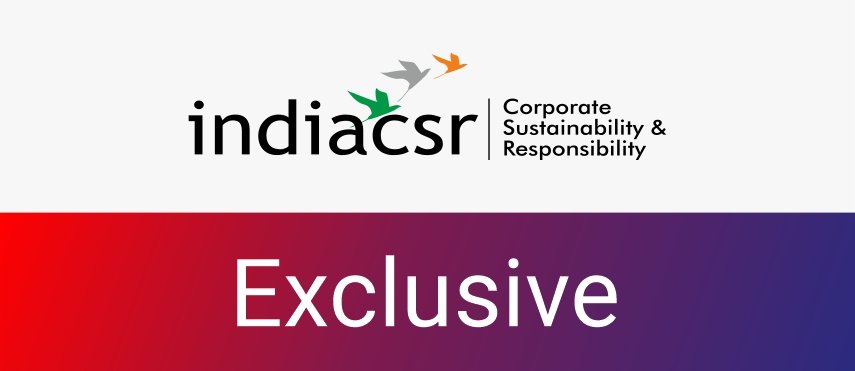Understanding the Importance of Retirement Planning for Self-Employed Individuals
Retirement is a time to embrace your dreams and live a contented life, but it requires meticulous financial planning and preparation. Retirement planning is even more critical for self-employed individuals as they lack the safety net of traditional benefits like PPF or LTA. Many self-employed individuals delay retirement planning due to a lack of knowledge or not understanding the criticality, leading to dependency on their children during their golden years.
Exploring Government Schemes for Retirement
Public Provident Fund (PPF)
The Public Provident Fund (PPF) is a popular long-term investment option backed by the Government of India. It offers attractive interest rates and the safety of principal investment. The interest earned and the returns are not taxable under the Income Tax Act, making it a tax-efficient investment.
National Pension System (NPS)
The National Pension System (NPS) is a government-run scheme designed to provide retirement income. It offers a mix of equity, corporate bonds, and government securities, allowing for a balanced investment portfolio. Contributions to NPS are eligible for tax deductions under Section 80C and Section 80CCD(1B) of the Income Tax Act.
Atal Pension Yojana (APY)
Atal Pension Yojana (APY) is aimed at providing a defined pension to the unorganized sector workers. The scheme guarantees a minimum pension ranging from INR 1,000 to INR 5,000 per month, depending on the contribution made. The Government of India co-contributes 50% of the total contribution or INR 1,000 per annum, whichever is lower, for eligible subscribers.
Investment Options Beyond Government Schemes
Mutual Funds and SIPs
Mutual funds and Systematic Investment Plans (SIPs) are excellent options for self-employed individuals looking to diversify their retirement portfolio. Mutual funds offer the potential for higher returns compared to traditional fixed-income investments. SIPs, in particular, help inculcate a disciplined investment habit by allowing regular, small investments.
Fixed Deposits and Bonds
Fixed deposits (FDs) and bonds are popular among conservative investors due to their low risk and guaranteed returns. While FDs offer fixed interest rates, bonds can provide slightly higher returns depending on the issuer’s credit rating. Both options are suitable for those who prioritize capital preservation.
Insurance Plans with Retirement Benefits
Insurance plans that come with retirement benefits can serve dual purposes: providing life insurance coverage and creating a retirement corpus. These plans often include features like guaranteed returns and tax benefits, making them a viable option for long-term financial security.
Creating a Diversified Retirement Portfolio
When planning for retirement, never put all your eggs in one basket. Diversifying your investments helps in balancing risk and returns. Evaluate various investment options and choose those that align with your financial goals and risk appetite.
Consistent contributions to your retirement fund are crucial. Regular investments, even if small, can accumulate significantly over time due to the power of compounding. This ensures a steady growth of your retirement corpus.
Reinvesting any surplus income can further enhance your retirement savings. Instead of letting extra funds sit idle, channel them into your diversified portfolio to maximize returns. This strategy helps in building a robust financial cushion for your retirement years.
Tax Benefits and Implications for Retirement Savings
Tax Deductions Under Section 80C
Investing in a retirement plan can help reduce tax liability and maximise savings. You can claim a deduction of up to Rs 1.5 lakh for the premiums paid towards the plan under Section 80C of the Income Tax Act, 1961. This makes it an effective way to plan for your future while saving money in the present.
Tax-Free Returns on PPF and NPS
The Public Provident Fund (PPF) and National Pension System (NPS) offer tax-free returns, which can significantly enhance your retirement corpus. Under prevailing tax laws, the interest earned on PPF is completely tax-free, and NPS offers tax benefits under Section 80CCD(1B) for contributions up to Rs 50,000.
Impact of Tax on Withdrawals
While contributions to retirement plans can offer tax benefits, it’s crucial to understand the tax implications on withdrawals. For instance, withdrawals from the NPS are partially taxable, whereas PPF withdrawals are entirely tax-free. Understanding these nuances can help you make informed decisions and optimize your retirement savings.
Common Mistakes to Avoid in Retirement Planning
Underestimating Retirement Corpus
One of the most common mistakes is underestimating the amount needed for a comfortable retirement. Many self-employed individuals do not have a fixed retirement age in mind, leading to an unsynchronized financial plan for retirement and estate distribution. This often results in a shortfall in the retirement corpus, making it difficult to maintain the desired lifestyle.
Ignoring Inflation
Ignoring the impact of inflation can erode the purchasing power of your savings over time. It is essential to factor in inflation while planning for retirement to ensure that your corpus is sufficient to meet future expenses. Starting early is crucial to maximize the benefits of compounding and to build a substantial corpus that can withstand inflationary pressures.
Lack of Professional Guidance
Many self-employed individuals make the mistake of not seeking professional financial advice. A financial advisor can help in creating a diversified retirement portfolio and in making informed investment decisions. They often invest all their eggs in one basket, which can be risky. Professional guidance can help in balancing risk and returns, ensuring a more secure financial future.
Adapting to Changing Social Structures and Family Dynamics
Independence from Family Support
The traditional joint family structure is changing, and many young individuals now live independently due to work and lifestyle choices. Self-employed individuals must build their retirement corpus without relying on family support. Retirement planning allows you to maintain a good lifestyle without depending on family members.
Planning for Longevity
With increasing life expectancy, planning for a longer retirement period is crucial. Self-employed individuals need to ensure that their retirement savings will last through their extended golden years. This requires careful consideration of investment options and regular contributions to retirement funds.
Ensuring Financial Security for Dependents
A well-structured retirement plan enables you to support your family financially. The payouts allow you to maintain your independence and look after your finances. Depending on the corpus you grow, you can also help your loved ones with their various goals and dreams. Retirement plans also have a life insurance component and provide a payout to your beneficiary if something happens to you. The life cover ensures your loved ones do not have to struggle financially.
Conclusion
Retirement planning for self-employed individuals in India is a crucial yet often overlooked aspect of financial management. Unlike salaried employees, self-employed individuals do not have access to employer-sponsored retirement plans like EPF, making it imperative to take proactive steps in building a retirement corpus. The key is to start early, diversify investments, and seek professional financial advice to navigate the complexities of inconsistent income and sudden outflows. By exploring various retirement plans and government schemes tailored for self-employed individuals, one can ensure a secure and fulfilling retirement. Remember, diligent planning and disciplined saving are the cornerstones of a comfortable and independent post-retirement life.
Frequently Asked Questions
Why is retirement planning crucial for self-employed individuals?
Retirement planning is essential for self-employed individuals as they do not have access to employer-sponsored retirement plans like EPF. They need to save for retirement on their own, ensuring financial security during their golden years.
What are some government schemes available for retirement planning?
Some government schemes available for retirement planning include the Public Provident Fund (PPF), National Pension System (NPS), and Atal Pension Yojana (APY). These schemes offer various benefits and tax advantages.
What are the best investment options beyond government schemes?
Beyond government schemes, self-employed individuals can consider investing in mutual funds and SIPs, fixed deposits and bonds, and insurance plans with retirement benefits. Diversifying investments can help balance risk and returns.
How can self-employed individuals create a diversified retirement portfolio?
To create a diversified retirement portfolio, self-employed individuals should balance risk and returns, make regular contributions, and reinvest surplus income wisely. Consulting a financial advisor can also provide personalized guidance.
What tax benefits are available for retirement savings?
Tax benefits for retirement savings include deductions under Section 80C for contributions to PPF and NPS. Additionally, returns on PPF and NPS are tax-free, and there are specific tax implications on withdrawals that need to be considered.
What common mistakes should be avoided in retirement planning?
Common mistakes to avoid in retirement planning include underestimating the required retirement corpus, ignoring inflation, and not seeking professional guidance. Starting early and planning meticulously can help avoid these pitfalls.




























